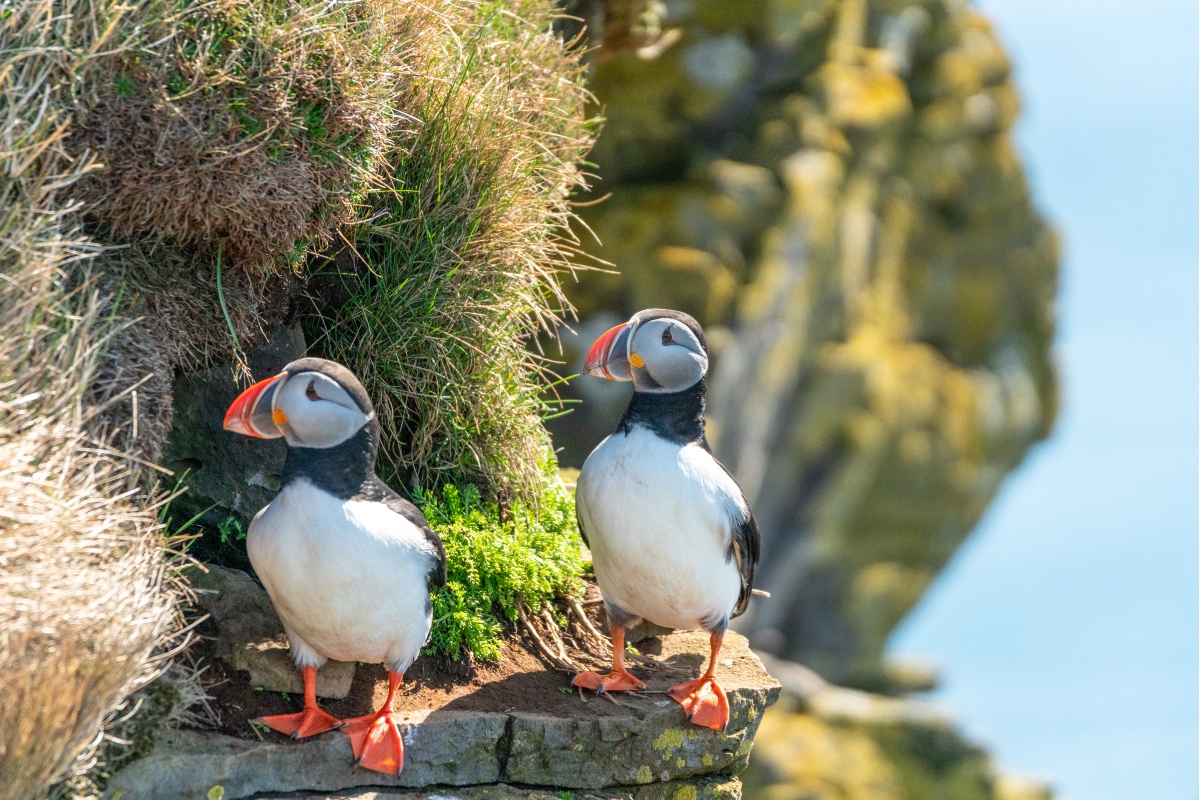Nestled amongst the craggy cliffs and rocky islands of the Northern Hemisphere, the Puffin emerges as an iconic seabird that captures hearts with its striking appearance and whimsical behaviors. Often referred to as the “clown of the sea,” or “sea Parrot,” this bird’s colorful bill and soulful eyes make it one of the most recognizable and beloved birds in marine environments.
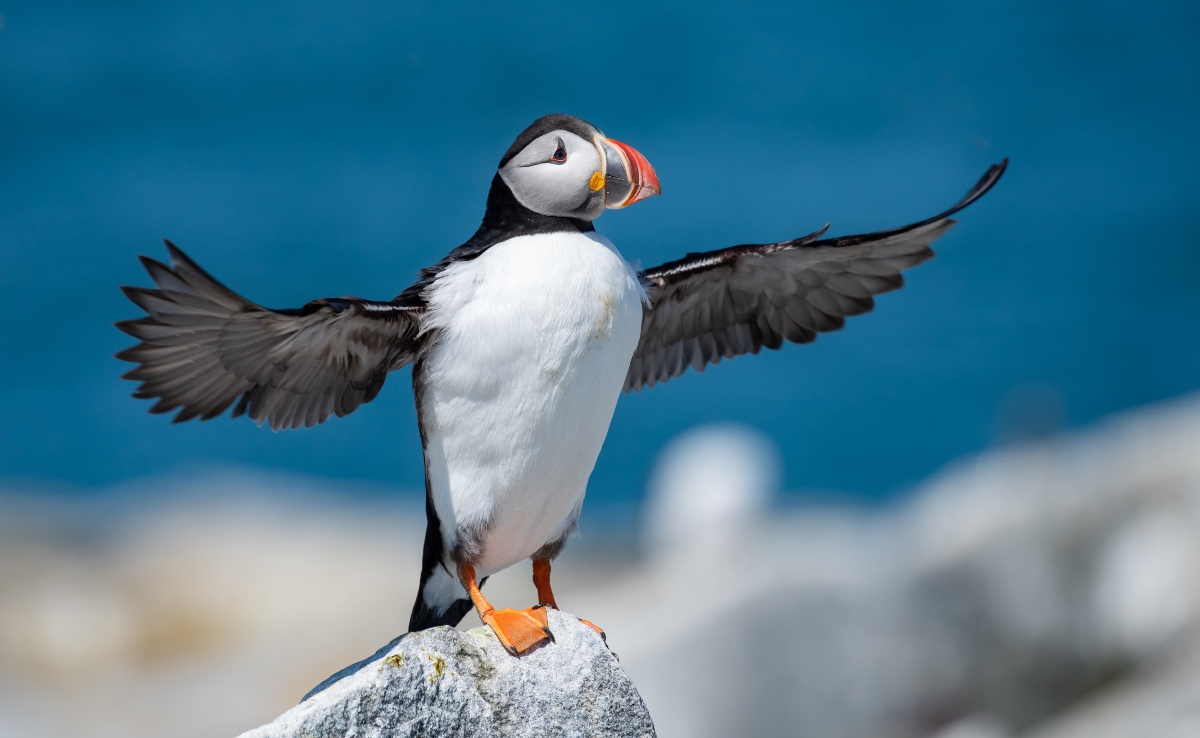
There are three species of Puffins: the Atlantic Puffin, the horned Puffin, and the tufted Puffin. Each species sports a robust body, short wings, and webbed feet. However, it’s the large, brightly colored bill that truly stands out, especially during the breeding season when it takes on its most vibrant hues.
Inhabiting the cold coastal regions around the North Atlantic and North Pacific Oceans, Puffins have adapted well to life at sea. Their stout wings allow for rapid flight, often reaching speeds of 55 miles per hour, while their webbed feet and streamlined bodies make them agile swimmers. Diving from the surface, they chase after their favorite foods, including herring, sand eels, and capelin.
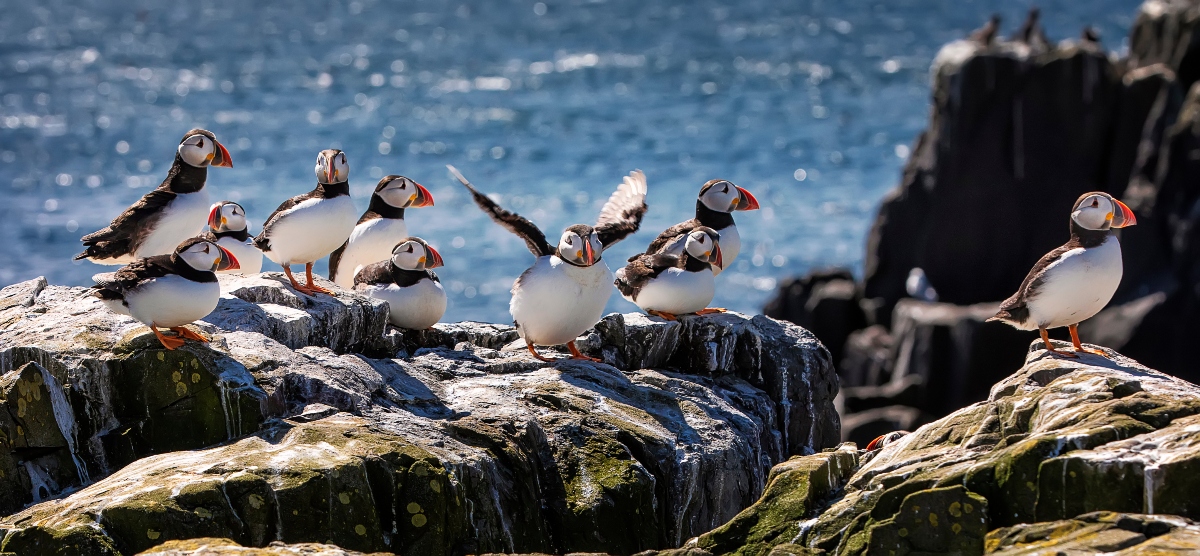
Puffins are social birds, often forming large colonies on cliff tops and islands during breeding season. Their nesting habits are unique; they dig burrows into the ground or use natural crevices to lay their single egg. Once hatched, both parents take turns feeding the chick, making multiple trips daily to gather fish.
One astonishing aspect of Puffin behavior is their ability to carry multiple fish in their bills at once. Thanks to the unique structure of their jaws, they can hold onto a catch while simultaneously going after more, sometimes carrying over a dozen fish at a time!
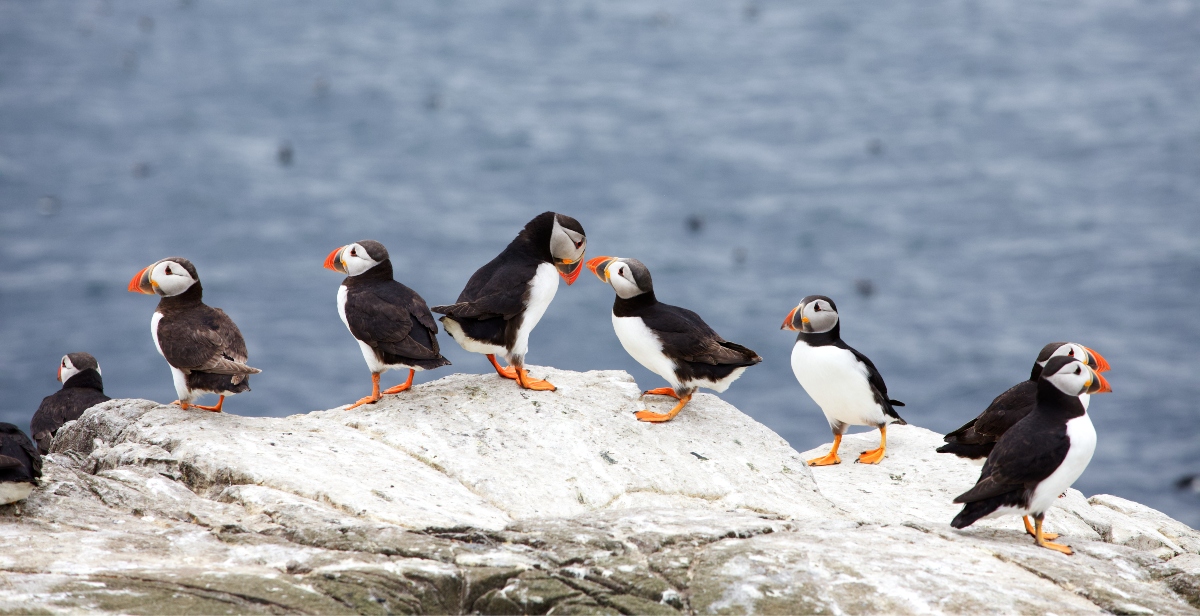
While their antics on land are clumsy and endearing, Puffins face challenges. Climate change affects the abundance and distribution of their primary food sources, and overfishing can exacerbate this issue. Additionally, introduced predators on some islands pose a threat to eggs, chicks, and nesting adults.
In cultural contexts, Puffins hold a special place in the hearts of communities surrounding their habitats. They’re celebrated in folklore, art, and even festivals. For some indigenous communities, Puffins also have historical significance as a vital food resource.
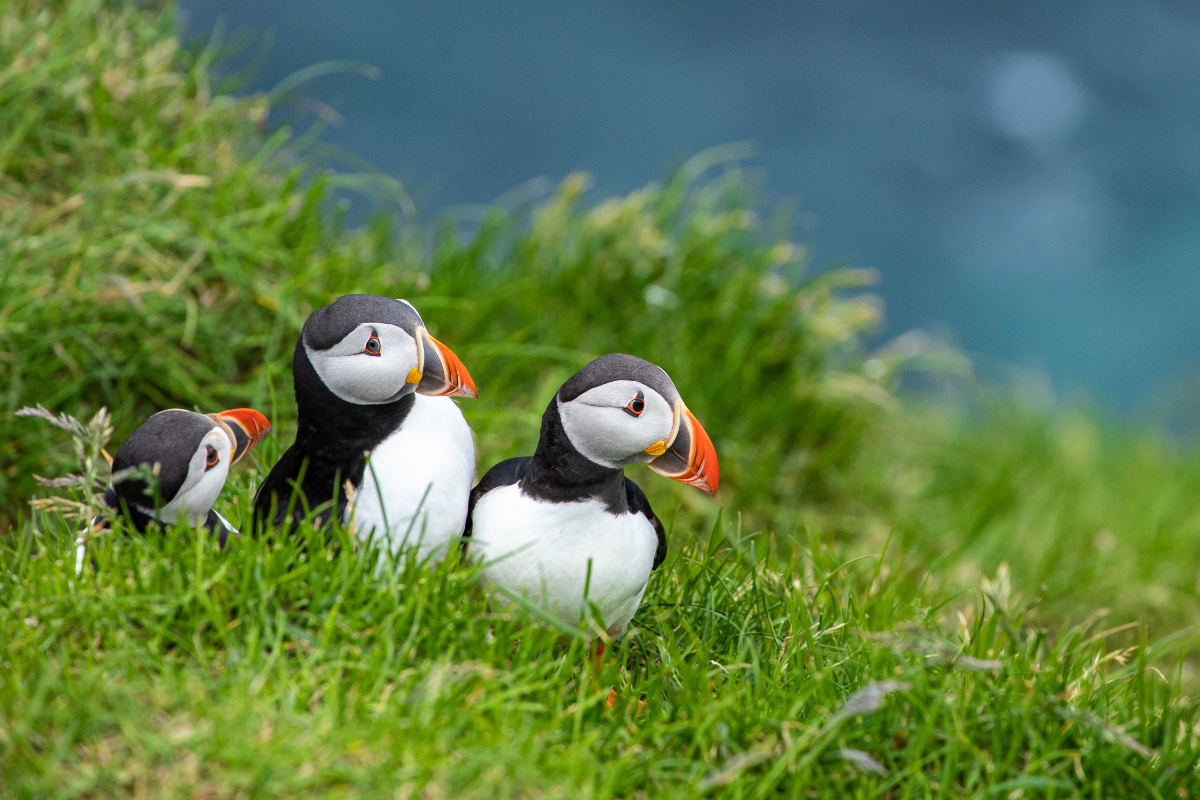
For bird enthusiasts, a trip to a Puffin colony is a bucket-list experience. Their vivid colors, expressive faces, and comical land maneuvers make them a joy to observe and photograph.
In essence, the Puffin is a symbol of the wild, untamed beauty of the oceans they call home. Their resilience against the crashing waves and their dedication to nurturing the next generation showcase nature’s wonder. As conservation efforts continue to support Puffin populations, we are reminded of the delicate balance of marine ecosystems and our responsibility to protect these vibrant avian treasures.
